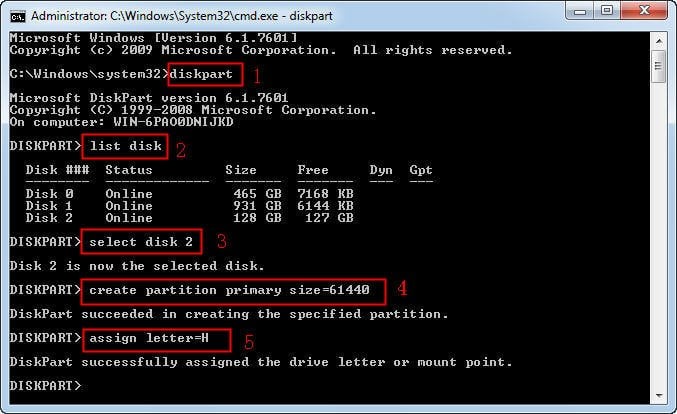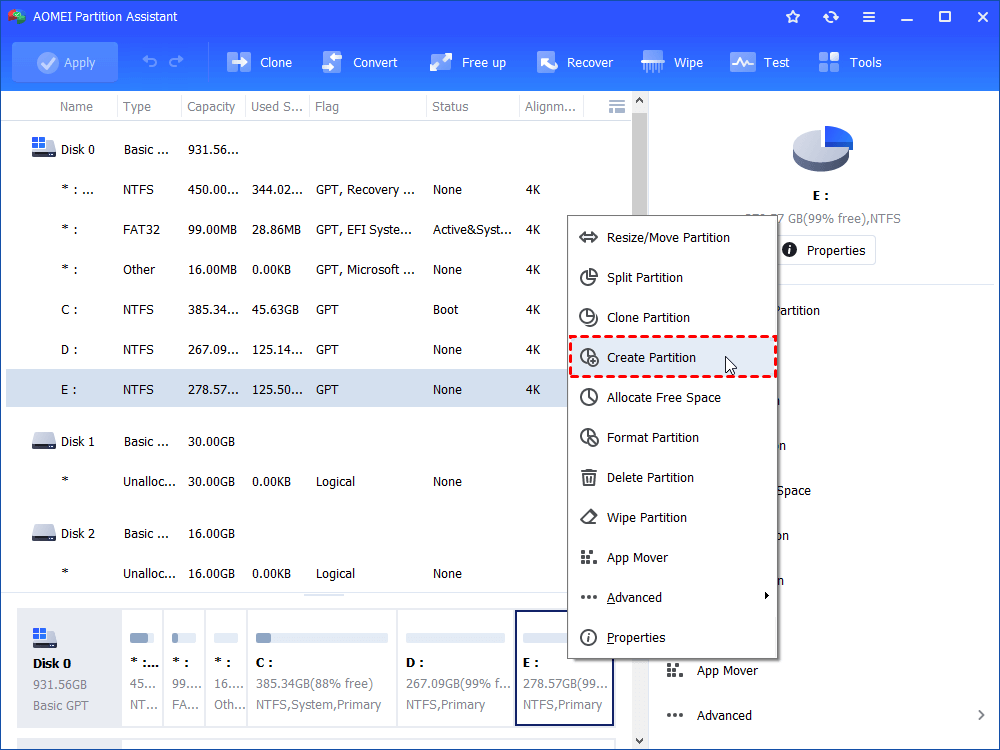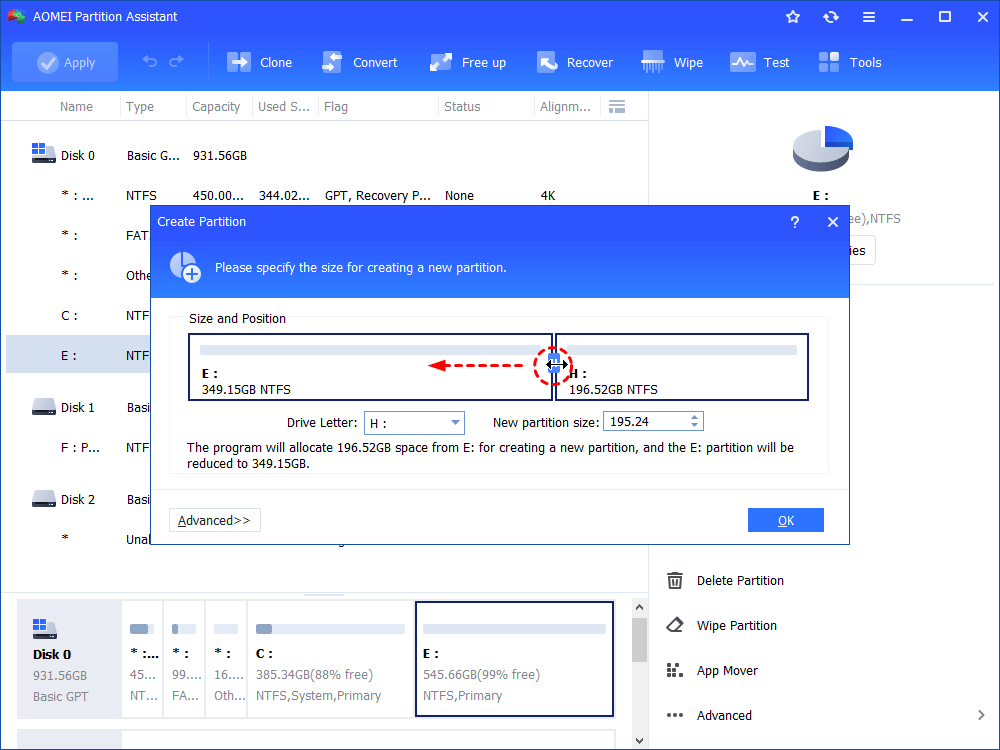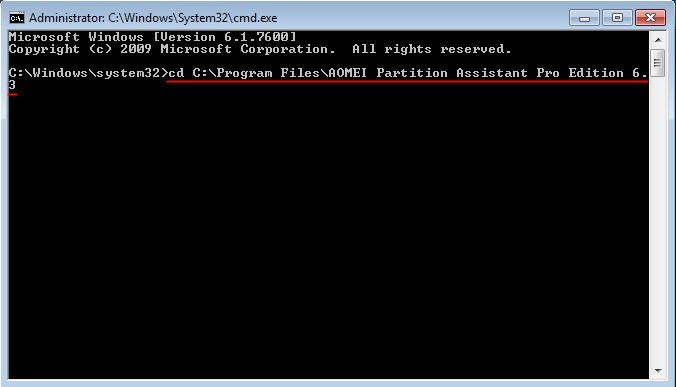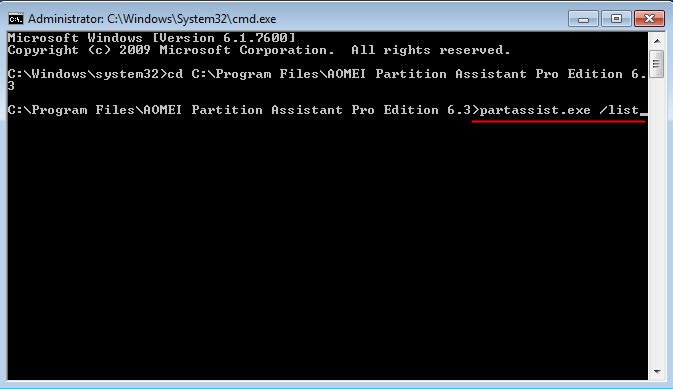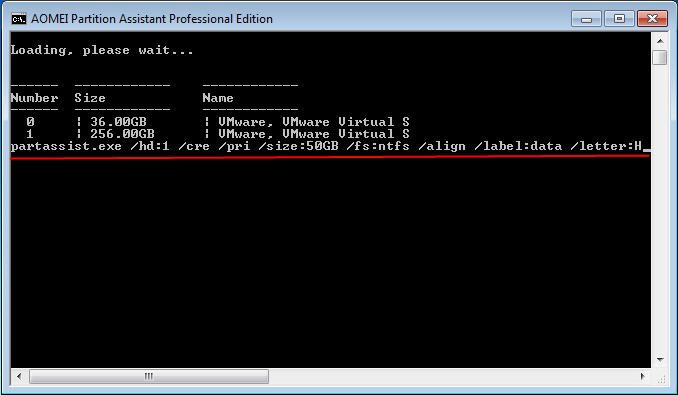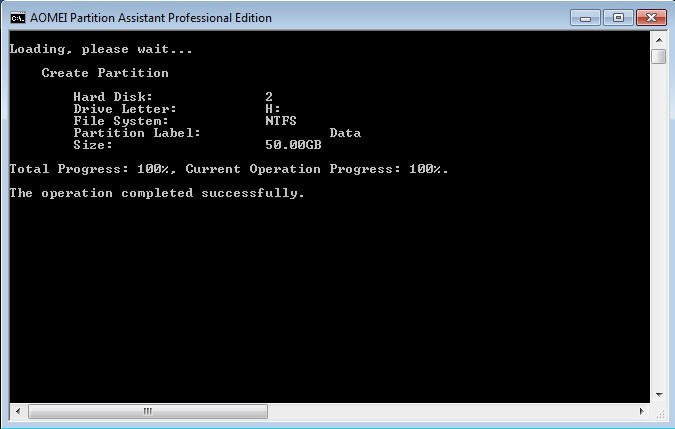DiskPart: Create Primary or Extended Partition for Windows 11/10/8/7
Read this post to learn how to create a primary partition or extended logical drive with specified size using DiskPart from command prompt. You can also use DiskPart free alternative - AOMEI Partition Assistant to create a partition.
Why need to create partition?
Windows users know that many computer's disks are not in the best state at the first time. If you haven't partitioned your disk after you installed the system, you will find that the disk seems not reasonable. You may want to partition a part from the disk to put the data specially, thus, creating a partition for your computer is necessary. Or you may would like to create a second partition for installing another operating system (dual-boot). Even when you format disk partition, you need to create partition to use it again.
How do I create a new partition using DiskPart?
DiskPart is a disk partition management command line tool that is built-in all Windows versions, such as Windows11, Windows 10, Windows 8, Windows 7. You can use DiskPart to create primary/logical/extended partitions on GPT and MBR disks in your computer. Using the command-line can totally replace the Windows interface. DiskPart provides three types of create partition, so it has three different commands.
1. First, open a Command Prompt by clicking Start -> All programs ->Accessories -> Command prompt, or pressing "WIN+R" and typing "cmd". Type: diskpart.
2. At the DiskPart prompt, type: list disk
All the disks in current system will be listed so that you know the disk number on which you want to create a partition.
3. Type: select disk n
n means the number of the disk. To create a partition, please make sure there is unallocated space on the disk you select.
4. After selecting the disk, type one of the following command according to your requirements.
create partition primary [size=n] [offset=n] [ID=byte | GUID] [noerr]
or
create partition extended [size=n] [offset=n] [noerr]
or
create partition logical [size=n] [offset=n] [noerr]
5. Type: assign letter=H
Assign drive letter can give the partition a name.
For example, how to use DiskPart to create primary partition? You can refer to the following example.
You can change the step4's command to create other types of partition. for example, if you want to use DiskPart to create extended logical partition, change command in Step4. Is DiskPart the only way to create partition? No!
The DiskPart alternative - AOMEI Partition Assistant
DiskPart is a great disk management tool, but it does have many limitations.
◉ To perform it on the computer, you must be a member of Administrators group, or you must have been delegated the appropriate authority.
◉ You can create primary/extended/logical partitions only on basic disks.
◉ You cannot create partitions on removable media.
To overcome those limitations, find a software to replace it is an effective way. Fortunately, the AOMEI Partition Assistant is a complete, reliable and easy hard disk partition manager which provides both GUI and command-line to partition disks in Windows 11/10/8.1/8/7/Vista/XP and Windows Server 2000/2003/2008 (R2)/2011/2012 (R2)/2016.
Method 1: create partition with AOMEI Partition Assistant GUI
AOMEI Partition Assistant provides you a graphical user interface (GUI) to partition hard drives. You can use it t create partition on an existing partition, or an unallocated space. With the intuitive interface, creating partition for computer should be very easy that even a noob can operate alone.
Step1. Download, Install and launch AOMEI Partition Assistant. You will see its concise main interface with the basic environment of your hard drive(s).
Step2. As we mentioned above, you can use it to create new partition directly on an existing partition or an unallocated space. Just right-click on a partition which has enough free space, and select "Create Partition" at the drop-down menu.
Step3. After clicking "Create Partition", it will pop out a window where you can resize partition for your new partition by drag the arrow to left or right, or you can type the number in the box. Click OK.
Step4. Now, you can preview the change of your hard drive in the main interface. Don't forget to click Apply on the toolbar to submit all operations.
This way can create partition with a simple few clicks. It is much easier to operate than DiskPart create partition. Besides, you can use it to move, resize, extend, shrink, merge, split, copy, delete, format, wipe partitions, etc. It has many other utilities for you to partition a hard drive.
Method 2: create partition with AOMEI Partition Assistant Command-line
To create partition with CMD, AOMEI Partition Assistant can do it in simpler commands. You can follow the steps in the next content.
1. Open the command prompt by clicking Start and typing "cmd" or pressing "WIN+R" and typing "cmd". Then, type: cd C:\Program Files\AOMEI Partition Assistant Pro Edition 6.3 (The path is your AOMEI Partition Assistant installation directory), and press Enter.
2. Type "partassist.exe /list" to list all the disks.
3. Then, it will list all disk in a new window. Type: partassist.exe /hd:n /cre /pri /size:50GB /fs:ntfs /align /label: Data /letter:H. Press Enter.
4. Wait a second. This will create a primary partition as the screenshoot below.
If you want to create an auto size partition using the first block of unallocated space on a disk, type the following command at the command prompt:
partassist.exe /hd:n /cre /pri /size:auto /end/ fs:ntfs /align /label:DATA /letter:E
If you want to create partition using offset, type:
partassist.exe /hd:n /cre /pri /size:n /offset:n /fs:fat32 /act /align /label:DATA /letter:F
Notes:
-
"/hd" followed by disk number, which starts with 0.
-
The value of "/size" can be auto or specified size in MB by default, and GB is also available.
-
"/fs" means file system, whose value can be fat16, fat32 or ntfs.
-
"/pri" means creating a primary partition.
-
"/end" means creating a specified size back end partition using the unallocated space at the end of a disk.
-
"/act" means creating an active partition.
-
"/hide" means creating a hidden partition.
-
"/letter" means assigning a drive letter to the partition.
-
"/offset" means creating a partition from the location of specified offset, starting with the beginning of the disk.
-
"/label" means setting a label for the partition.
AOMEI partassist.exe uses the very simple command so that it can be used more easy than DiskPart, you do not need to list every disk every time, just do it with the whole commands. Besides, you can learn more how to use AOMEI Partition Assistant Command Line, please click here.

